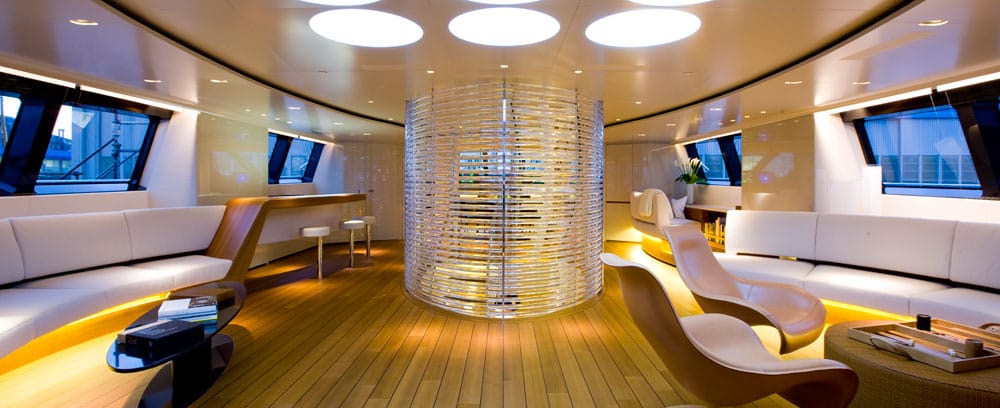
Design Trends
Boats have always reflected the personalities of the people who commission them, and the fashions of the era. A Greek shipping tycoon once specified a décor of exotic woods and selected the skins of endangered species to cover some of the furniture. During the Edwardian era, yachtsmen wanted a formal dining room, a mahogany-paneled salon and tufted leather seating. Titans of industry at the end of the 20th century often favored marble and onyx decors. Today’s yacht owners are active people with varied interests, and their new vessels reflect their lives. They’ve traded formality and stodginess for flexibility and fun.
“Owners want more of a relaxed atmosphere,” said Diane Byrne, editor of MegaYachtNews.com and a senior contributing editor to this magazine. “In talking with interior designers and builders, I’ve found that the reason is to have more of a casual, even beachy, look and feel — in keeping with the lifestyles led on land.”
Greg Marshall, president of Greg Marshall Design in Vancouver, British Columbia, takes this premise a step further. He says many yachts have qualities that are similar to those of a Range Rover. “You can dress up in a tuxedo and go to a formal party in it or go tromping through the mud,” Marshall said.
See the complete photo gallery here.
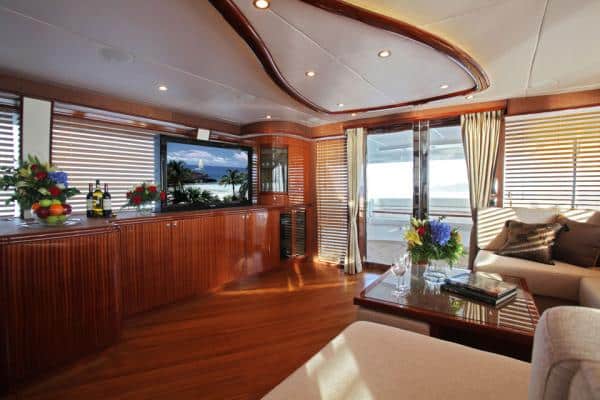
Yachtsmen want their boat to serve many whims, but space is limited — even aboard a superyacht. The first thing to go? That stuffy office. Many boat owners conduct business by staying in touch via notebook computers and smartphones, and they do the same aboard their boats. Luiz de Basto, president of Luiz de Basto Designs in Miami, said that most boats he has designed during the past year or two have not included a dedicated office space, a previously popular option. “Nowadays everybody has a wireless computer,” de Basto said. “They go to the flybridge and look out at the landscape while working.”
The wireless age has brought more focus to multimedia entertainment. “Your boat’s a radio station, a TV station, a satellite link,” said Jim Gilbert, director of commercial and media management for Aquos Yachts. “It’s a huge benefit to a boat, but it also dictates design and engineering in a lot of cases.” Links to the worldwide Web, TV reception and satellite radio require sophisticated servers, which need dedicated air handlers to keep the components at the right temperature. On the upcoming Aquos design Star Fish, the gym abaft the wheelhouse converts to an open-air screening room with the entire wall acting as a projection screen.
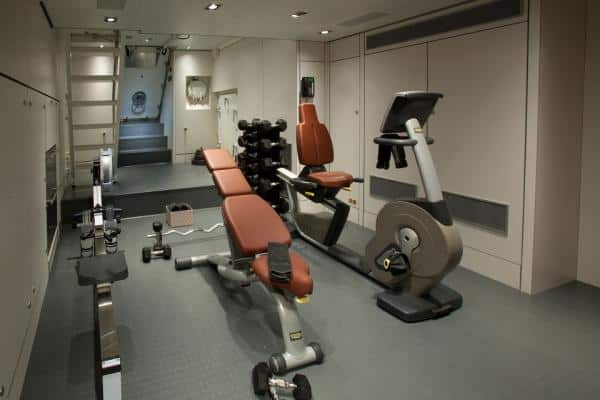
Beyond the attractions of leisure in the media room, workout areas help keep would-be couch potatoes looking good on the sun pad. Over the past two years, many new boats have received some sort of fitness area. “You need a gym and a spa area with massage, sauna, beach, fitness equipment,” said John DeCaro of All Ocean Yachts in Fort Lauderdale, Florida. “But you still need to make it hideable.” On a 47-meter Heesen, the designers at Bannenberg & Rowell tucked a treadmill into the corner of what they called the family viewing room, giving the runner a view of a flatscreen TV on the forward bulkhead.
Salons used to be closed-up spaces dripping in varnished dark woods — again, a reflection of the drawing-room lives lived by their owners ashore. Today, designers are using larger windows and even full-height glass panels to let in more natural light. Interior colors are often lighter and brighter. Some owners need the salon to be a multiple-use area that can be closed off if small groups of people want privacy, or be more open if a larger crowd wants to enjoy a party. De Basto said the decision is often cultural. Middle Eastern owners want areas in which as many as 10 people would gather and carry on a discussion over coffee.
Yacht owners and guests can also easily take advantage of the natural world via fold-down balconies or side swim platforms that extend down and out, such as those on Big Fish (plus, read about Big Fish‘s green efforts). These have gained in popularity and appear aboard yachts of less than 100 feet.
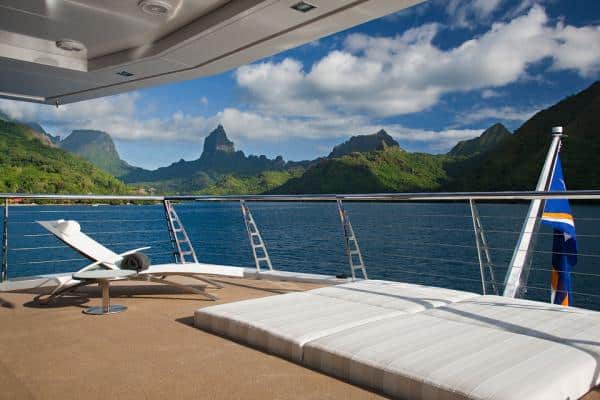
That ability to convert space is also being applied to staterooms that can adapt to accommodate the needs of guests. On the Sanlorenzo SD92 Lady Jane, British designer Stephen Huish used movable shoji screens in front of the portals, which allows occupants to let in as much light as they want. In the guest cabins, double berths can convert to twins. Stateroom berths are larger than they once were, letting people feel more like they’re at home. In the quest for larger, more usable living areas, Gilbert said that he’s seeing owners moving away from the 1,200-square-foot owner’s stateroom. “They realize that having massive sleeping accommodations is a waste of space,” he said. On the other hand, some owners are adding private sitting areas and outdoor space to the owner’s suite, creating a sanctuary with exclusive amenities.
After a day of fresh air and sunshine, everyone wants to eat. But don’t look for a formal dining room — owners are opting for more casual dining areas, both inside and out. “It’s not ‘When will we have dinner?’; it’s ‘Where will we have dinner?’” Gilbert explained. “You’re anchored somewhere and the sun is setting over the aft deck — ‘Let’s have dinner over there.’” This desire for more open-air space has carried over to flying bridges, as well.
Moving away from formal dining also means that many owners are opting for a more casual open-galley area. “People enjoy cooking,” de Basto said. “Many owners do their own.” The result: Owners want the same level of enjoyment they derive from cooking at home. Great appliance brands, such as Sub-Zero, Miele and Gaggenau, are now more common.
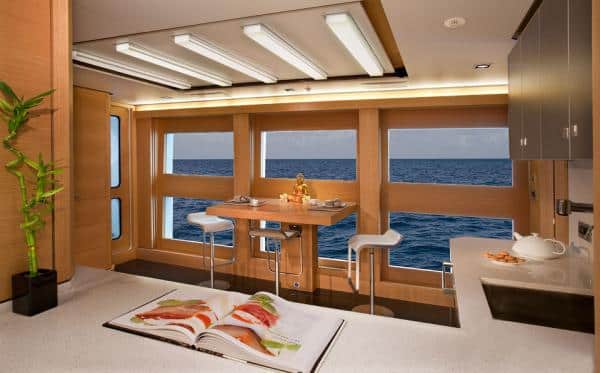
Just as yacht owners in the past created spaces that reminded them of home, today’s owners commission yachts that duplicate details they see in their office or house: open structural members and plenty of glass. Bridges are now being designed with soles made out of honeycomb aluminum embedded in glass, while vertical beams and panels behind the glass are polished aluminum.
Today’s yachtsmen know what they like, and that has carried over to a more relaxed theme on modern yachts. “People are just loosening up on boats a bit now and having a little more fun with them,” Marshall said.









